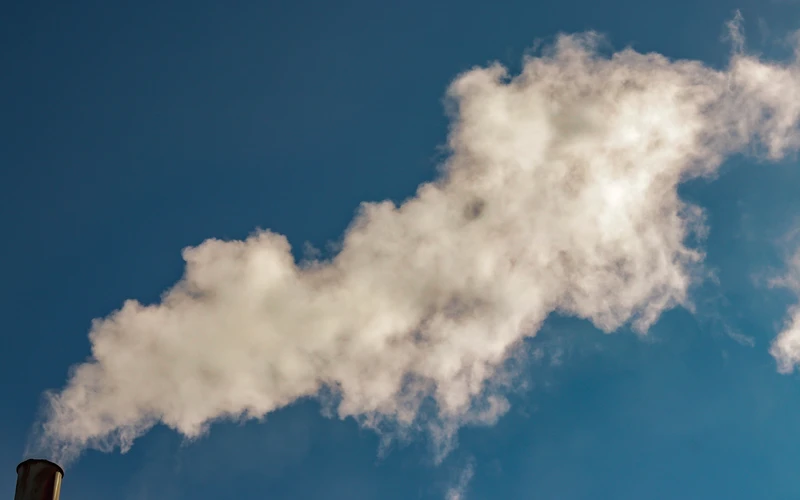Cremation is a common method of dealing with human remains after death, but is cremation bad for the environment?
With cremation releasing carbon dioxide and relying on the burning of fossil fuels, it does have an environmental impact.
This article will explore the effects of cremation on the climate and compare it to other burial practices.
Is Cremation Bad for the Environment?
Cremation is ultimately worse for the environment than more sustainable burial practices.
The amount of greenhouse gas emissions and mercury pollution generated make traditional flame cremation systems unsustainable long-term.
While cremation may use fewer resources than conventional burials, the scale of emissions, as cremation rates rise globally, creates too large of a carbon footprint.
More research, regulations, and investment into emissions-reducing technology are needed for crematoriums worldwide.
Greener memorial options like alkaline hydrolysis water cremation, natural burials, and biodegradable caskets offer more eco-friendly ways to honor the dead while protecting the planet.
Key Points
- Cremation relies on the burning of fossil fuels like propane and natural gas, releasing emissions like carbon dioxide and mercury vapor.
- Each cremation emits around 250 lbs of carbon dioxide into the atmosphere. Mercury emissions occur when tooth fillings containing mercury vaporize under high heat.
- While cremation uses less land and resources than traditional burials, the scale of emissions from rising cremation rates causes too much pollution.
- Greener cremation options exist, like water cremation, using renewable energy at facilities, and recycling emissions. But more research and regulations are needed industry-wide.
What is cremation and how is it done?
Cremation is a method of burying the dead by burning the body and remains until only bone fragments or ash are left.
These remains are then put in an urn and given to loved ones or scattered.
But how exactly is a body cremated?
The cremation process begins by placing the body into a casket or alternative container.
This is then put into a cremation chamber or retort and subjected to intense heat and flame for approximately 2-3 hours.
Temperatures can reach 1600-1800°F, reducing the body mainly to brittle, calcified bones.
After cremation, the bone fragments are swept from the chamber and processed to create uniform ash.
The remaining metal parts like hip joints are removed and recycled.
The ash can then be kept in an urn or scattered in a meaningful place.
What emissions are released during cremation?
The cremation process relies on the burning of fossil fuels like propane or natural gas to generate enough heat.
As a result, cremation facilities emit carbon dioxide, particulate matter, and mercury emissions into the atmosphere.
According to the Cremation Association of North America (CANA), each cremation emits approximately 250 lbs of carbon dioxide into the air from the use of fuel.
Mercury emissions occur because some tooth fillings contain mercury, which vaporizes when exposed to high heat.
Particulate matter and carbon monoxide are also released during the incomplete combustion of the body and casket materials.
Overall, these substances contribute to air pollution and climate change when released in large quantities.
Is cremation more eco-friendly than burial?

Many argue that cremation is a greener option compared to traditional burial in a cemetery plot.
Cremation uses fewer natural resources and land area than burial since one plot can only accommodate one body while a single urn can hold multiple remains.
The greenhouse gas emissions from cremation are also lower.
While each cremation emits around 250 lbs of carbon dioxide, the production and Memorial Day upkeep of a burial plot generates over 400 lbs of carbon dioxide.
The manufacturing of caskets, headstones, and grave liners also has large carbon footprints.
However, cremation facilities do generate higher mercury emissions compared to burials.
So, is cremation ultimately better for the planet?
The answer is not definitive, but cremation appears to be the more sustainable option based on land use and carbon emissions alone.
More research is needed to weigh the full environmental impacts.
What practices make the cremation more eco-friendly?
More and more crematoriums worldwide are taking steps to reduce their environmental footprint.
Here are some ways cremation can be greener:
- Use of energy-efficient retorts to lower emissions
- Switching to renewable energy like solar to power facilities
- Capture and recycling of mercury emissions using scrubbers
- Offering biodegradable or simple shrouds instead of ornate caskets
- Providing biodegradable urns to return ashes to the earth
- Scattering ashes to avoid taking up land for urn burial
- Switching to water cremation systems like alkaline hydrolysis
Water cremation, in particular, avoids airborne emissions entirely by using a solution of water and alkali instead of fire.
However, alkaline hydrolysis is only legal in some US states currently and is costlier than flame cremation.
What are the risks of mercury exposure from cremations?
Mercury is released into the air during cremations, originating from dental amalgam tooth fillings that contain about 50% mercury.
With increasing global cremation rates, there are concerns about the accumulation of mercury pollution.
Once airborne, mercury returns to the environment through precipitation and directly contaminates water bodies and soil.
Fish and animals absorb the toxic mercury, which works up the food chain to harm human health.
Mercury damages the brain, heart, lungs, immune system, and other organs.
While mercury filters in crematoriums help lower emissions, better containment technology is still needed.
More sustainable dental practices are also essential to eliminating this major mercury pollution source over time.
Does cremation ash pose health or environmental risks?
Cremated remains, also known as ashes, are generally considered safe.
According to CANA, cremated remains are non-toxic and can be safely scattered in a meaningful place or buried in an urn.
However, some studies have detected traces of toxins like mercury, lead, and chlorinated organic compounds in cremated ashes.
This indicates that more research is needed to fully understand the composition and risks of human ash.
Proper disposal is important as scattering or burying ashes can still impact soil, groundwater, and the surrounding environment.
For example, dumping cremation ashes into public lakes and rivers is illegal in many areas.
Overall, the potential risks of cremated remains require more analysis.
How Does Cremation Affect the Environment and Physical Earth?
Cremation affects the physical environment through the release of emissions that contribute to climate change.
The burning of fossil fuels during cremation emits greenhouse gases like carbon dioxide into the atmosphere.
Mercury emissions also occur when dental fillings containing mercury vaporize in intense heat.
These air pollutants contribute to environmental issues like global warming, acid rain, and mercury contamination of water bodies when the emissions eventually settle back to earth through precipitation.
Additionally, the scaling up of cremations as the population grows puts more stress on the planet if facilities continue to rely on traditional but emissions-heavy technology and energy sources.
The accumulation of toxins and particulates in soil and groundwater is also a concern over the long term.
Proper filtration and containment systems are needed to prevent the dumping of mercury and other byproducts into the surrounding ecosystem.
More research is still required to fully understand how cremation emissions alter the atmosphere and physical earth.
Conclusion: Is Cremation Bad for the Environment?
Cremation does have environmental impacts in terms of greenhouse gas emissions and mercury pollution.
However, it uses fewer resources and less land than conventional burials in caskets.
With greener practices and technology, crematoriums can lower their carbon footprints and make cremation an eco-friendlier option.
More transparency, regulations, and research are still required to better understand the sustainability of current practices.
The future of greener memorial options remains to be seen.
FAQ
What is Water Cremation?
Water cremation, also called alkaline hydrolysis or aquamation, uses water instead of fire to dissolve the body. A combination of gentle water flow, temperature, and alkalinity accelerates the natural breakdown of organic matter. The only byproducts are amino acids, peptides, sugar, and salts that are safe for the environment. No mercury emissions occur.
Are Cremation Ashes Toxic?
According to industry groups, cremated remains or ashes do not pose health or environmental risks. However, some studies have found traces of toxins in ashes indicating that more research is needed on proper disposal methods. Dumping ashes into waterways or soil haphazardly can put the surrounding ecosystem at risk.
What is a Natural/Green Burial?
Natural or green burials aim to decompose the body naturally to enrich the soil and support new life. Instead of concrete vaults, caskets made of biodegradable materials like wicker or wood are used. Toxic embalming fluids are also avoided. The goal is to minimize environmental damage and resource use.
GreenChiCafe is passionate about the environment and our natural world. Please check out our website for more content on green living, sustainability, and protecting the planet we call home.

Annie is a passionate environmental writer and activist. She has been writing about sustainability, conservation, and green living for over 15+ years. Annie is dedicated to raising awareness about environmental issues and providing practical tips for living an eco-friendly lifestyle. When she’s not writing, you can find her volunteering with local environmental organizations, teaching workshops on zero waste living, or exploring nature. Feel free to get in touch with Annie: annie@greenchicafe.com

